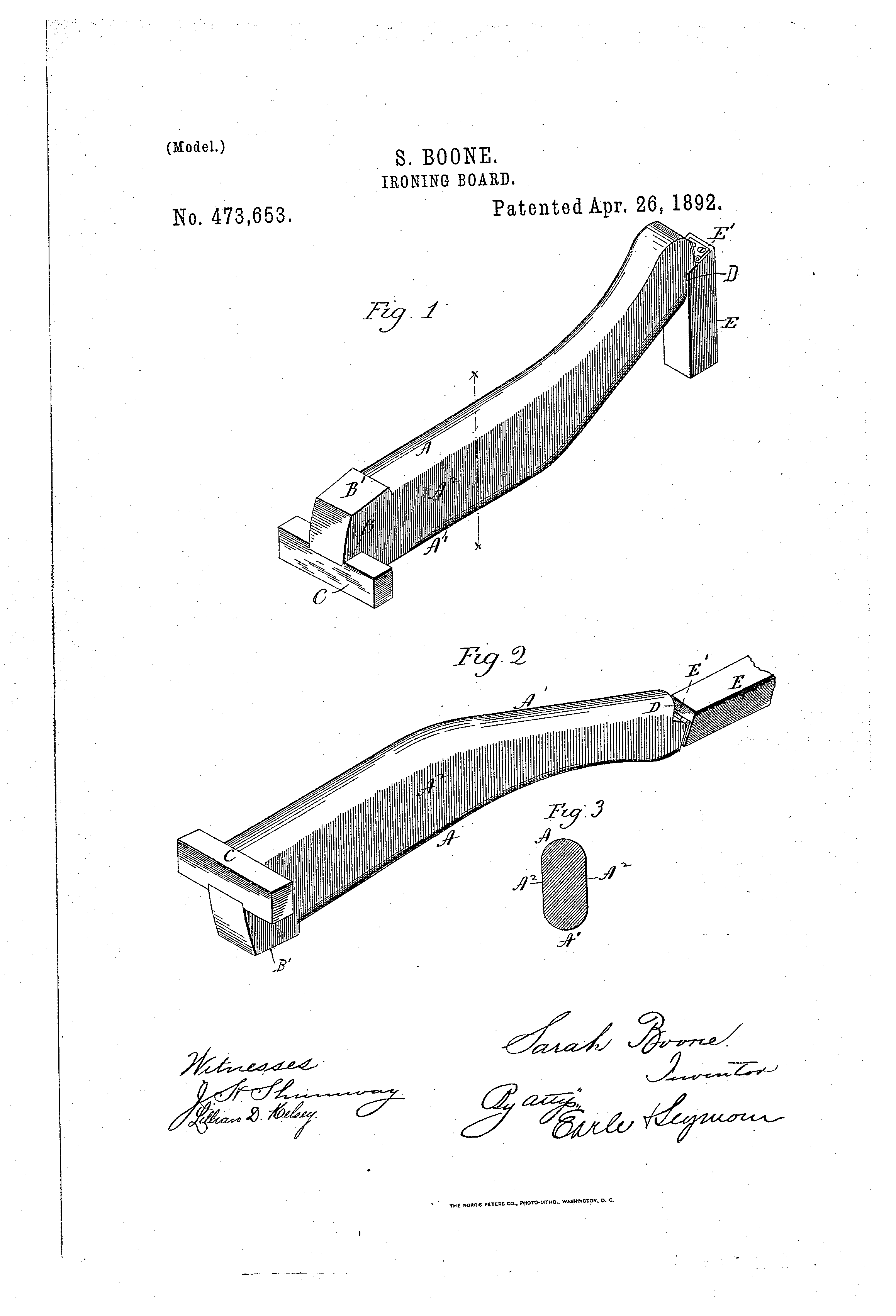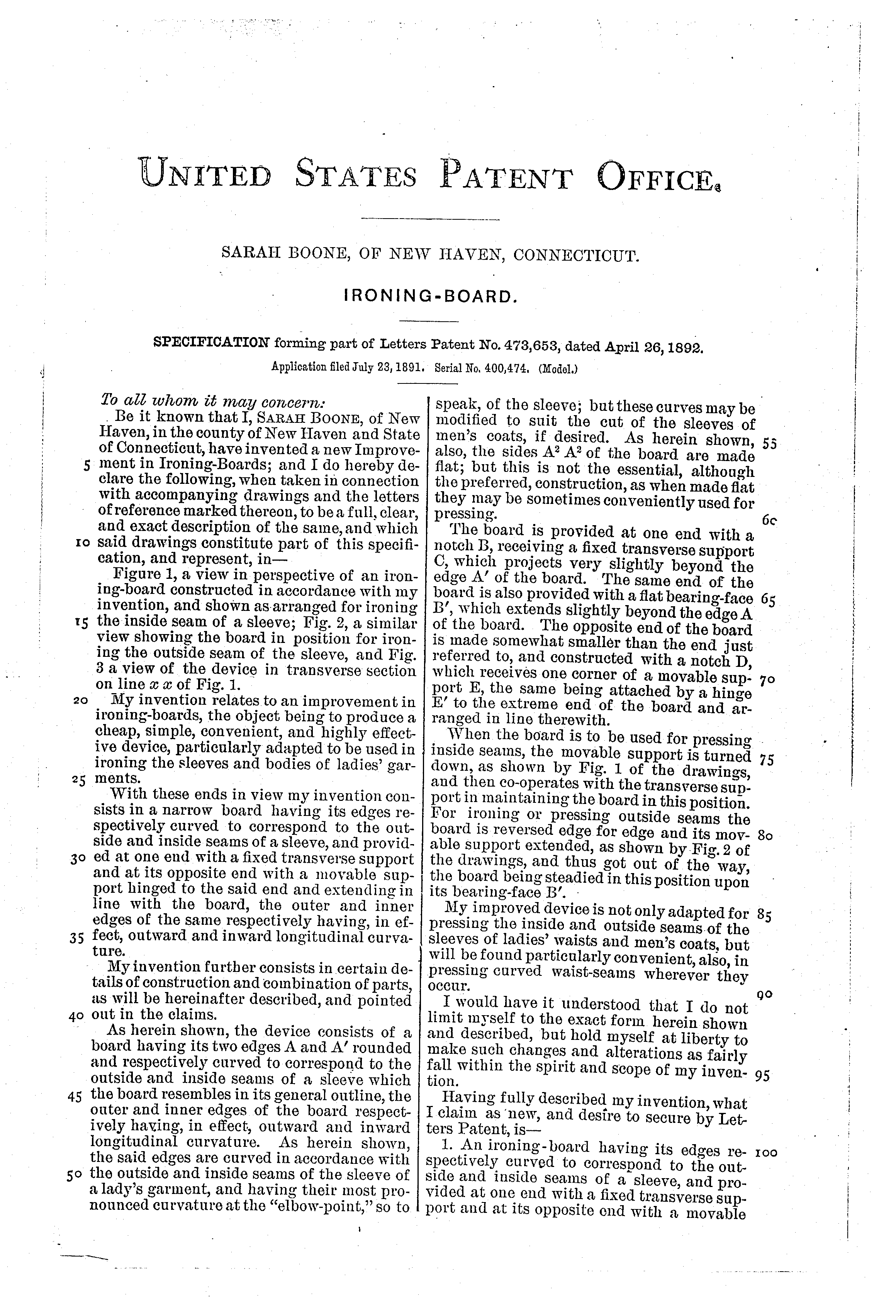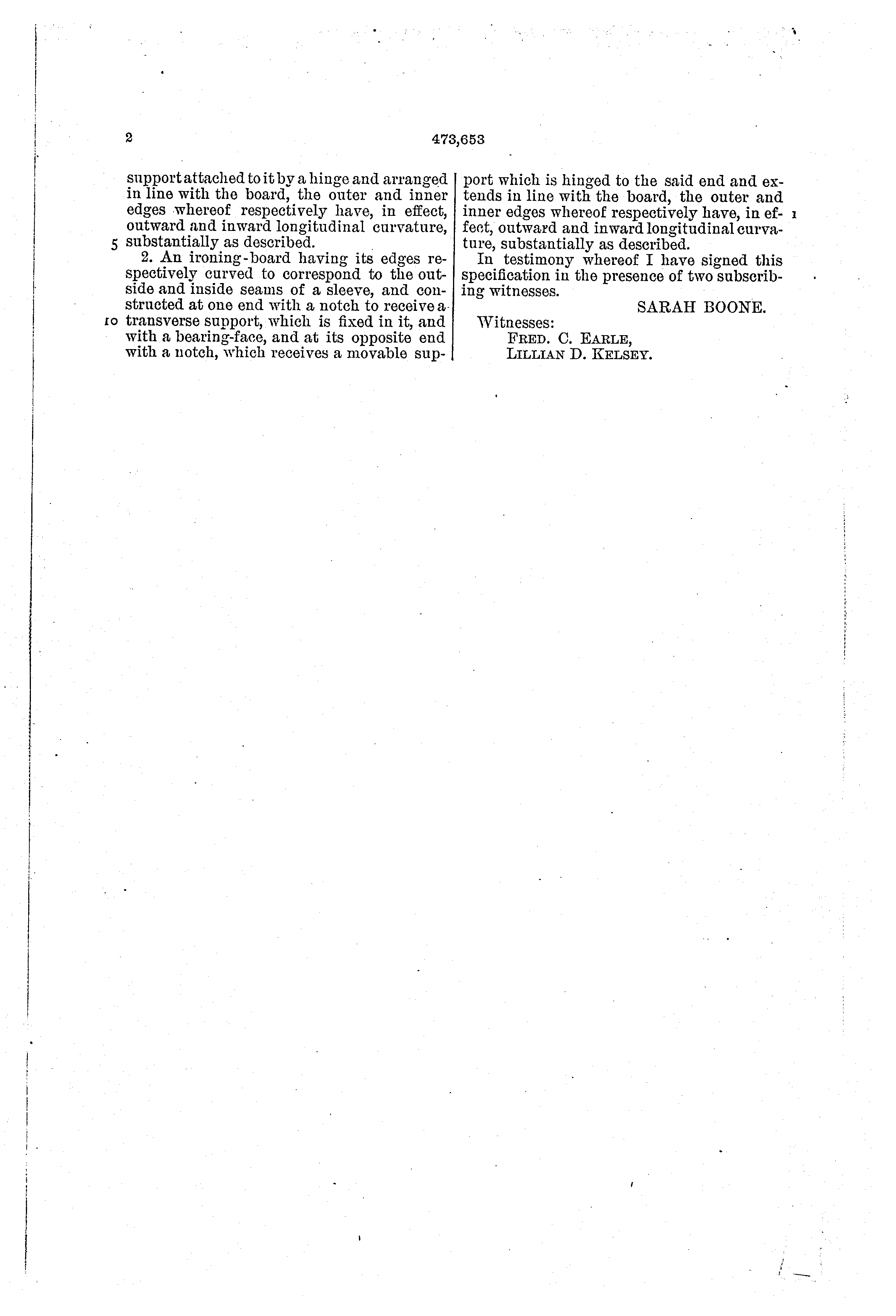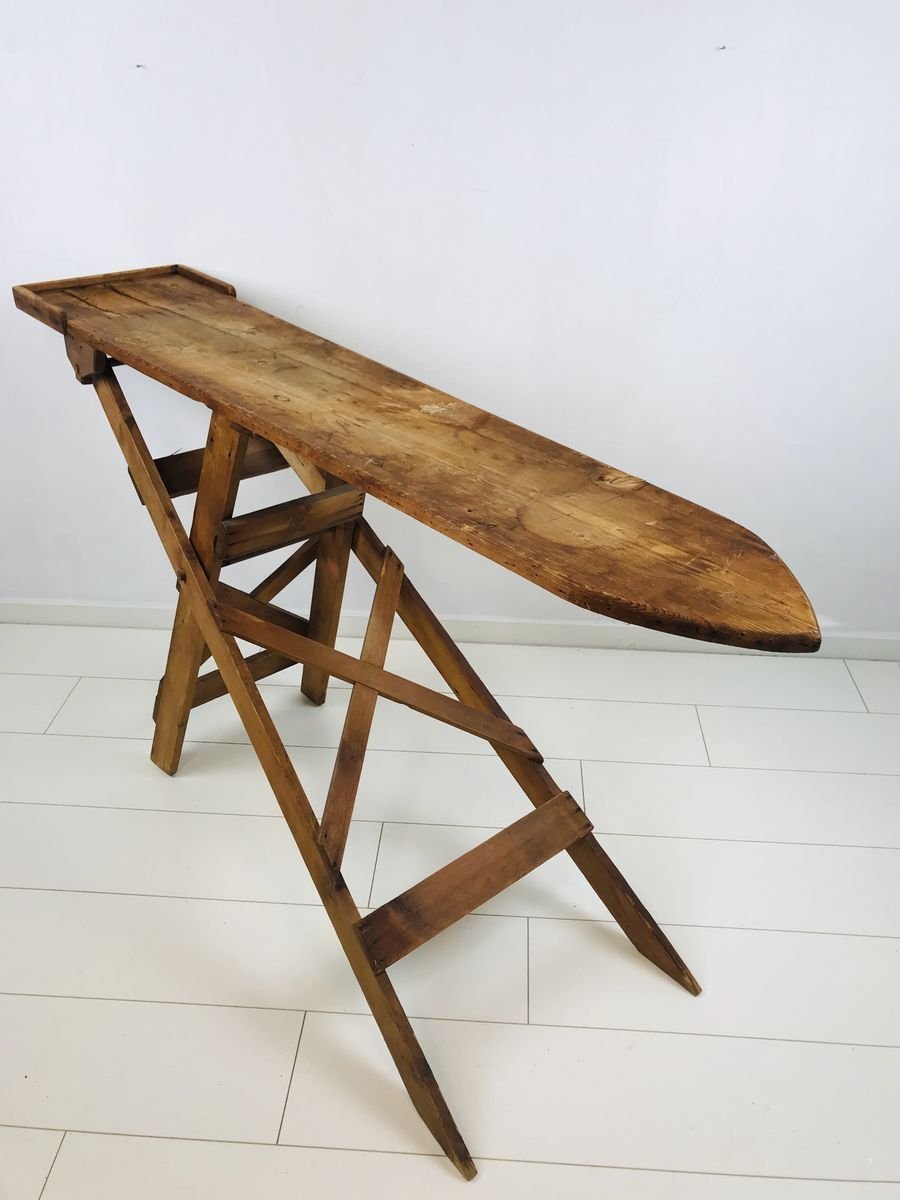NBIM Celebrates Black Innovators: The Black Dressmaker who Transformed Ironing
A patent illustration of the folding mechanism for Sarah Boone's ironing board. Text reads: S. Boone. Ironing Board. No. 473.653. Patented Apr. 26, 1892. Signed by Sarah Boone, Inventor. Witnesses: Fred. O. Earle, Lillian D. Kelsey
Sarah (Marshall) Boone was born enslaved in New Bern, North Carolina in 1832. She married very young (only 14 or 15) and moved to New Haven after her freedom was purchased, ostensibly by her new husband, a freedman. They had eight children and had relocated to Connecticut by 1856, six years before the start of the Civil War. (Sarah Boone Invents A Better Ironing Board, Ainissa Ramirez, CTExplored, 2020)
In 1892, Sarah, now working as a dressmaker, invented and patented an early version of the modern ironing board with collapsible legs. Prior to her invention, women had been pressing and ironing on tables or a plank rested across two chairs. (Created Equal: The Lives and Ideas of Black American Innovators, William Morrow, 1993)
“Sarah Boone was one of many dressmakers in New Haven, and the listing of her name in the city directory after 1861 and her proximity to Yale’s campus suggests that she made dresses for both Black and white clients, a common practice according to Rollins Osterweis’s Three Centuries of New Haven, 1638-1938.” ( Ramirez, 2020).
“My invention relates to an improvement in ironing-boards, the object being to produce a cheap, simple, convenient, and highly effective device, particularly adapted to be used in ironing the sleeves and bodies of ladies garments,” Her patent application states, “My improved device is not only adapted for pressing the inside and outside seams-of the sleeves of ladies waists and mens coats. but will be found particularly convenient, also, in pressing curved waist-seams wherever they occur.”
Sarah’s invention “is the predecessor to our modern ironing board, containing many similar elements: it narrowed at the top to fit inside clothes; it had padding on the side to prevent unwanted impressions; and it was collapsible to be stored easily.” (Here are two Connecticut inventors who should have statues, Anissia Ramirez, The Hartford Courant, 2020).
Sarah Marshall Boone died in 1904 and is buried in a family plot in Evergreen Cemetery in New Haven.
You can find the full details of her patent application here.
[Thanks to CTExplored for many of the resources used in this feature!]





